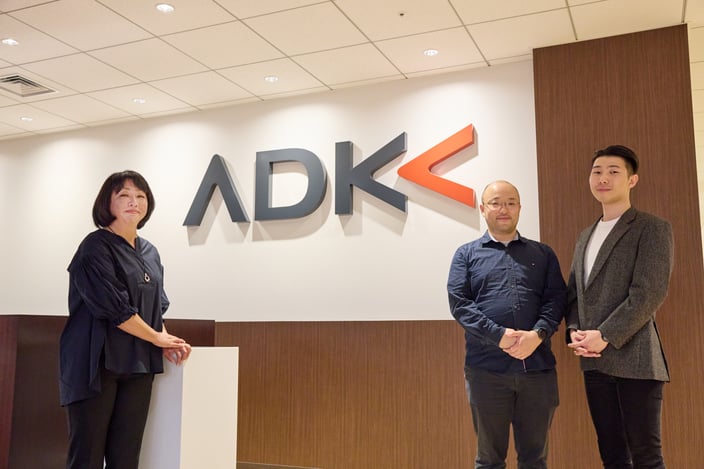Cutting-Edge Technology at Haneda's Foot Spa: Using People Flow Analysis in Making Smart Cities
(This article is a translation of an interview in April 2023)
Haneda Future Development Co., Ltd. / Kajima Corporation Real Estate Development Division
Nikkei Research's people flow solution SKIA, which uses advanced LiDAR technology to accurately measure people flow without handling personal information, has been adopted in smart cities.
Haneda Future Development Co., Ltd. (Tokyo, Japan), led by Kajima Corporation with eight other collaborating companies, pre-opened a large-scale complex facility HANEDA INNOVATION CITY (HICity) next to Haneda Airport in 2020, with "cutting-edge technology" and "culture" as its core, and plans its grand opening in 2023. Nikkei Research's SKIA has been installed and continuously measuring the people flow at the Foot Spa & Sky Deck in HICity since 2022.
We interviewed Mr. Atsushi Kato (Haneda Future Development Co., Ltd. / Kajima Corporation Real Estate Development Division) about their objectives for installing SKIA and further plans.
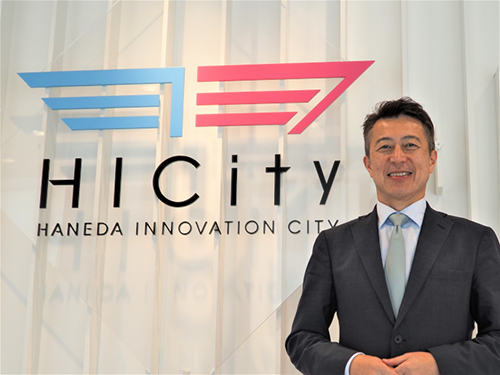
General Manger, Project Department, Real Estate Development Division, Kajima Corporation
Mr. Atsushi Kato
(Company name, department, and title are as of April 2023)
Key Points
Challenges faced
Target goals of "efficient operation" and "service improvement" with the adoption of cutting-edge technology in building a smart city.
Achievements by SKIA
Real-time visualization for understanding people's entry or level of crowdedness in the area.
Outcomes and further plans for utilizing SKIA
Showing results on "3D K-Field" and increased attention to the platform.
Further ahead, stream live data from multiple locations, and contribute to a safe and comfortable urban development.
“3D K-Field” is a system that has been developed to visualize real time conditions of a construction site. It incorporates BIM as a 3D map to display the location of machinery, equipment, materials, and people. The system also features a dashboard to monitor collected data such as vitals of workers and usage of machinery.
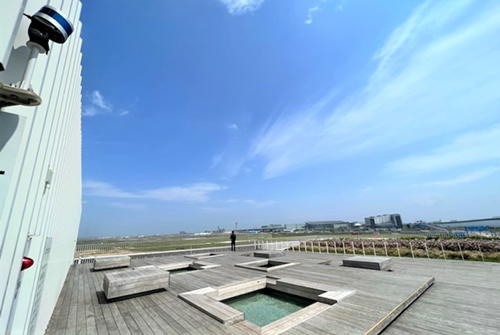
A testing ground for cutting-edge technology; LiDAR has the advantage of zero concern over personal information handling.
Q.How did you get to know Nikkei Research's people flow solution SKIA?
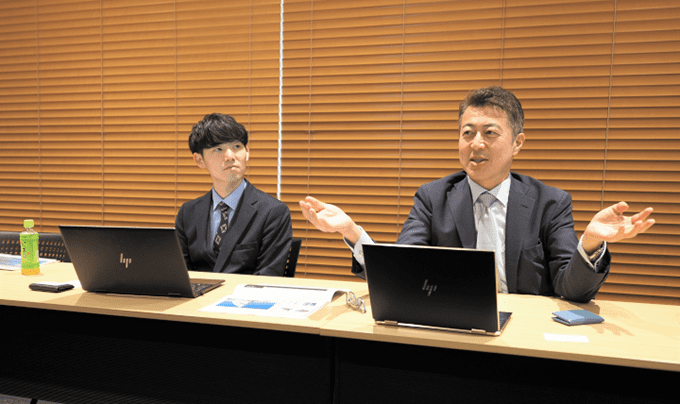
Mr. Kato: Kajima's Real Estate Development Division promotes business as a real estate developer. When you say real estate development in Japan, most are redevelopment projects, and building a new city in a completely empty space next to the airport like the HICity project is not what everyone can experience. We came up with the concept of "a testing ground for cutting-edge technology" when we considered about how to create a system that would generate revenue by attracting people continuously. It aims to create a cycle where tech companies move in and carry out new experiments that will receive high impressions and attract even more other companies.
Through the use of cutting-edge technologies, our goals are "efficient operation," that is less cost and labor, and "service improvement," such as having your order from a cell phone delivered by a robot to anywhere in the facility. While searching for technology to be implemented for our purpose, I got interested in SKIA, which uses LiDAR technology to identify people and accurately analyze their movements.
Q. What was notable about LiDAR technology?
Mr. Kato: It is very important to capture the status of the city — what kind of people are in which place, how they are moving, and what the density is, etc. We use beacons, GPS data, and image analysis of cameras, but not everything can be obtained with beacons or GPS, while cameras have issues regarding the handling of personal information. I thought there should be a perfect role for LiDAR, which does not collect personal information and therefore does not intrude privacy.
Since LiDAR is used in automated driving, my first encounter with LiDAR technology was when we installed an autonomous vehicle for the city's bus circulation. I thought the people flow analysis was suitable due to its high spatial cognitive performance.
Advanced technology, now widely accepted in our society Visitors cheers at our demo video
Q. What was the reaction, internally and externally, when introducing the new technology?
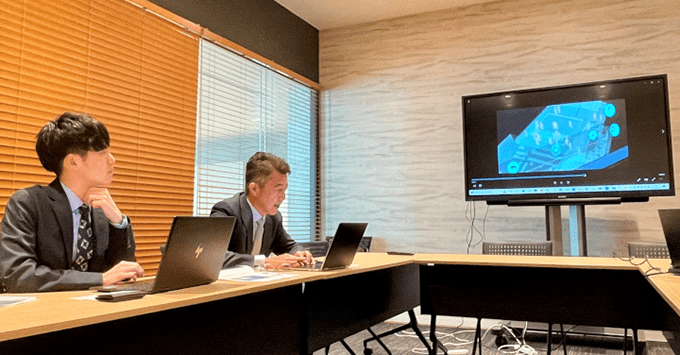
Mr. Kato: I feel that in general, our society is becoming more and more receptive to new technologies. At first, we were concerned that there might be complaints, for example, about the safety of children when a four-legged robot trots around the facility, or some people would strongly oppose data collection, but in fact, most people think it is interesting. We discovered that both children and their parents recognize that this is something that our surrounding environment and society are becoming to be (and they accept it).
Q. How are you using the data from SKIA at the Foot Spa Sky Deck?
Mr. Kato: Since the area is open to the public like an observation terrace, we use it as a management tool by checking whether people are not entering dangerous areas out of sight or how crowded the area is.
Data from SKIA is linked to 3D K-Field, a spatial data integration platform developed by our company, which can share on-site conditions in 3D in real-time. 3D K-Field's demonstration of "Introducing LiDAR measurement at Foot Spa" has been well received as "easy to understand" and "interesting," where exclaim of cheers often roars from people when they watch the video of human models moving.
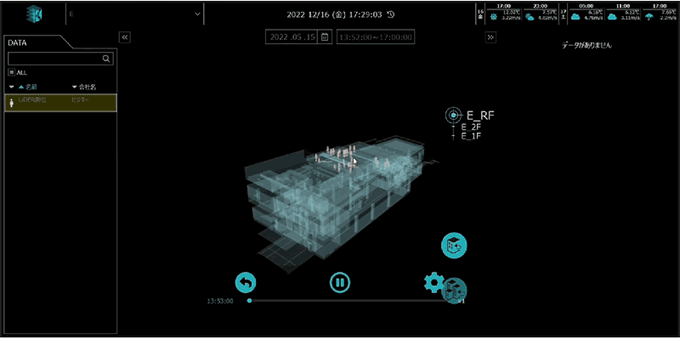
Mr. Kato: We show the 3D K-Field to visitors of the facility to explain our businesses. They tell us the output is "useful," where you can immediately think of ways to manage the facility, for example, check if there are any excessive crowding or suspicious individuals at night after closing.
Q. How do you plan to utilize the system further on? On the other hand, what are the challenges?
Mr. Kato: As expected, we have found that LiDAR has a strong ability to grasp on-site conditions in real time, so we would like to use it widely as a tool to provide basic information necessary for infrastructure management. For example, attaching LiDAR to utility poles and live-streaming how and what kind of people are moving at each location. By sending information, such as how many tourists are approaching and how they are approaching to autonomous vehicles and robots, we will be able to provide safer and more accurate services.
I have no complaints about the solution, but the issue would be the cost. The equipment is still too expensive to be implemented widely as an operational phase. If the cost can be reduced, I think the possibilities will expand.
In combination with others such as image analysis of cameras Association with business-oriented perspectives
Q. What specific possibilities do you see?
Mr. Kato: For example, it would be much easier than image analysis of cameras, without intruding the privacy, to determine whether the number of cars in the parking lot is exceeding the limit or where the available spaces are. If you just need to detect empty spaces, other sensors can do the job, but the combination of the movement of cars and people is a distinctive capability of LiDAR. While other sensors and cameras are also achieving technology advancements, if the cost of LiDAR comes down, I think we will be able to optimize building operation costs by selecting the right method in various situations.
Q. What are the good points and bad points about Nikkei Research?
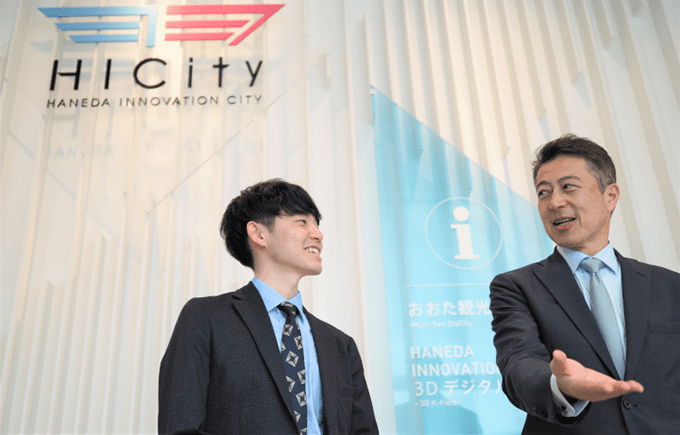
Mr. Kato: I don't think there are any bad points (laughs). The best thing about them is that, since they are one of the companies in the Nikkei Group, they consider "business" at the center. It is easy to work with them because we share the perspective on what technology can be useful in businesses, and how to connect technology to businesses, rather than just discussing technology itself.
Toward the Operational Phase of Smart Cities
Q. Lastly, tell us about HICity's future plans.
Mr. Kato: Currently, we are focusing on the development of the area scheduled to be opening in 2023, but after the grand opening, the nine companies incorporating Haneda Future Development Co. will further focus on the city's operation. With the concept of "a place for field experiments," we would like to create a cycle that promotes social implementation of new technologies in this city. To do so, we would like to proactively spread the news of the technologies tested in HICity as well.
In the area scheduled to open in 2023, there will be an advanced medical research center and we are going to welcome more companies pioneering in new fields. Together with various tenants and companies running field experiments, we would like to create a city where new initiatives and innovations are born continuously. We will also continue to express and share the city's activities, attractiveness, and new technologies through our events and such.
-
Aug/24/2023
please contact us below.

